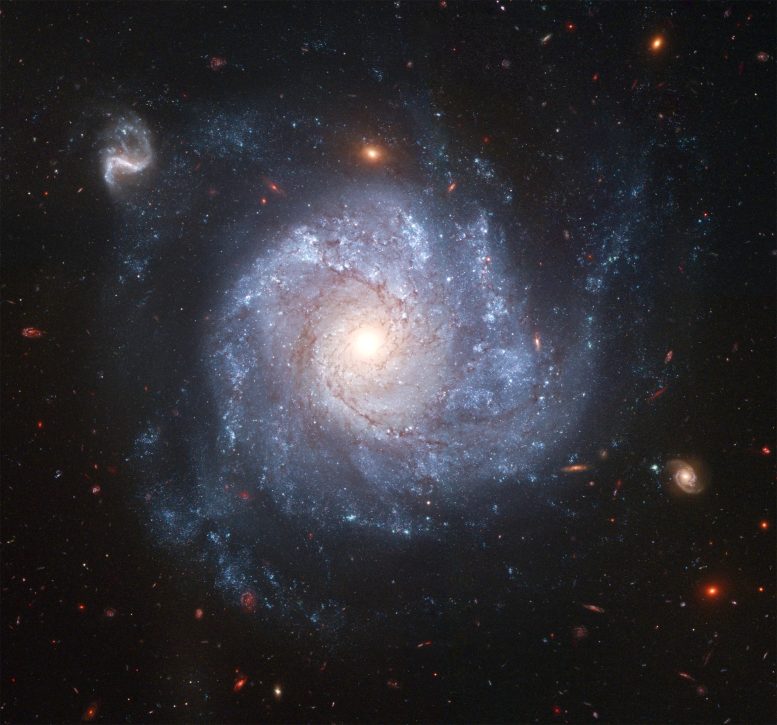
The Hubble Space Telescope captured this dramatic spiral galaxy, cataloged as NGC 1309. Credit: NASA, ESA, The Hubble Heritage Team, (STScI/AURA) and A. Riess (STScI)
A Tenacious Star Validates a Revised Model of Supernovae
A supernova is the cataclysmic explosion of a star. Thermonuclear supernovae, in particular, signal the complete destruction of a white dwarf star, leaving nothing behind. At least that’s what astrophysics models and observations suggested.
So when a team of astronomers went to examine the site of the peculiar thermonuclear supernova SN 2012Z with the Hubble Space Telescope, they were shocked to discover that the star had survived the explosion. Not only had it survived, but the star was actually even brighter after the supernova than it had been before. First author Curtis McCully, a postdoctoral researcher at University of California, Santa Barbara and Las Cumbres Observatory, presented these findings at a press conference at the 240th meeting of the American Astronomical Society and published them in an article in The Astrophysical Journal. The puzzling results provide new information about the origins of some of the most common, yet mysterious, explosions in the universe.
These thermonuclear supernovae, known as Type Ia supernovae, are some of the most important tools in astronomers’ toolkits for measuring cosmic distances. Beginning in 1998, observations of these explosions revealed that the universe has been expanding at an ever-accelerating rate. This is thought to be due to dark energy, the discovery of which won the Nobel Prize in Physics in 2011.
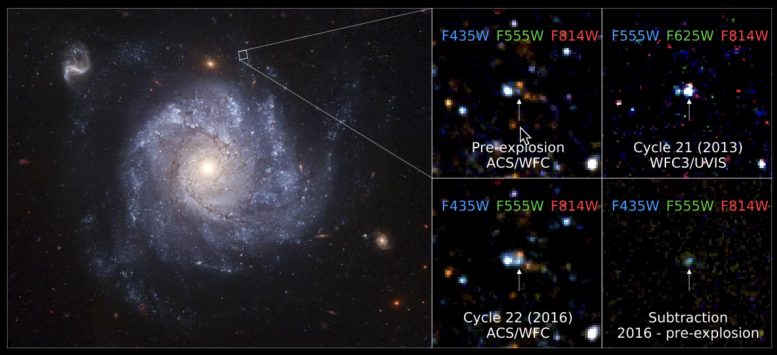
Left: Color image of Galaxy NGC 1309 before Supernova 2012Z. Right: Clockwise from top right: the position of the supernova pre-explosion; SN~2012Z during the 2013 visit; the difference between the pre-explosion images and the 2016 observations; the location of SN~2012Z in the latest observations in 2016. Credit: McCully et al.
While they are vitally important to astronomy, the origins of thermonuclear supernovae are poorly understood. Astronomers agree that they are the destruction of white dwarf stars — stars roughly the mass of the sun packed into the size of the Earth. What causes the stars to explode is unknown. One theory posits that the white dwarf steals matter from a companion star. When the white dwarf gets too heavy, thermonuclear reactions ignite in the core and lead to a runaway explosion that destroys the star.
SN 2012Z was a strange type of thermonuclear explosion, sometimes called a Type Iax supernova. They are the dimmer, weaker cousins of the more traditional Type Ia. Because they are less powerful and slower explosions, some scientists have theorized that they are failed Type Ia supernovae. The new observations confirm this hypothesis.
In 2012, the supernova 2012Z was detected in the nearby spiral galaxy NGC 1309, which had been studied in depth and captured in many Hubble images over the years leading up to 2012Z. Hubble images were taken in 2013 in a concerted effort to identify which star in the older images corresponded to the star that had exploded. Analysis of this data in 2014 was successful — scientists were able to identify the star at the exact position of the supernova 2012Z. This was the first time that the progenitor star of a white dwarf supernova had been identified.
“We were expecting to see one of two things when we got the most recent Hubble data,” McCully said. “Either the star would have completely gone away, or maybe it would have still been there, meaning the star we saw in the pre-explosion images wasn’t the one that blew up. Nobody was expecting to see a surviving star that was brighter. That was a real puzzle.”
McCully and the team think that the half-exploded star got brighter because it puffed up to a much bigger state. The supernova wasn’t strong enough to blow away all the material, so some of it fell back into what is called a bound remnant. Over time, they expect the star to slowly return to its initial state, only less massive and larger. Paradoxically, for white dwarf stars, the less mass they have, the larger they are in diameter.
“This star surviving is a little like Obi-Wan Kenobi coming back as a force ghost in Star Wars,” said co-author Andy Howell, adjunct professor at UC Santa Barbara and senior staff scientist at Las Cumbres Observatory. “Nature tried to strike this star down, but it came back more powerful than we could have imagined. It is still the same star, but back in a different form. It transcended death.”
For decades scientists thought that Type Ia supernovae explode when a white dwarf star reaches a certain limit in size, called the Chandrasekhar limit, about 1.4 times the mass of the sun. That model has fallen somewhat out of favor in the last few years, as many supernovae have been found to be less massive than this, and new theoretical ideas have indicated that there are other things causing them to explode. Astronomers were not sure if stars ever got near the Chandrasekhar limit before exploding. The study authors now think that this growth to the ultimate limit is exactly what happened to SN 2012Z.
“The implications for Type Ia supernovae are profound,” says McCully. “We’ve found that supernovae at least can grow to the limit and explode. Yet the explosions are weak, at least some of the time. Now we need to understand what makes a supernova fail and become a Type Iax, and what makes one successful as a Type Ia.”
Reference: “Still Brighter than Pre-explosion, SN 2012Z Did Not Disappear: Comparing Hubble Space Telescope Observations a Decade Apart” by Curtis McCully, Saurabh W. Jha, Richard A. Scalzo, D. Andrew Howell, Ryan J. Foley, Yaotian Zeng, Zheng-Wei Liu, Griffin Hosseinzadeh, Lars Bildsten, Adam G. Riess, Robert P. Kirshner, G. H. Marion and Yssavo Camacho-Neves, 1 February 2022, The Astrophysical Journal.
DOI: 10.3847/1538-4357/ac3bbd



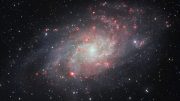



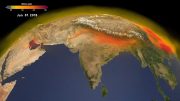


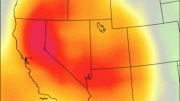
This is truly facsinating, but I don’t thing Andy knows exactly what a Force Ghost is. Just sayin
When our universe was “born” with the Big Bang theory, a scientist named George Gamow wanted to conveniently claim that all of the elements were already here. It was Fred Hoyle that stated that scenario was impossible because of the enormous energy needed to create the heavier elements. That is when Gamow created the “ad-hoc” theory that gravity created stars that blew up to make heavier elements. “Supernovae” were born without any evidence that this could actually happen. Besides, how many stars blew up to create our planet? 30? 60? How did the elements find their way from many light years away to congregate here especially with the universe expanding?
The answer to why this star is still here is because supernovae simply do not exist. A collision between two massive objects that created the galaxies created the energy we see, not gravity. Our universe turned itself into a gargantuan particle collider that created quark plasma shrapnel just like what particle colliders do. It is just a weak theory that has never worked that allowed this star to still exist. If anyone studies any of the supernovae that scientists can see, none of them follow the parameters of the theory that states they happen.
This particular star was impacted by an object. Collisions happen frequently if scientists are able to look out over the observable universe. Objects go flying by our planet all the time. The moon is littered with impacts and one took out most of the life on Earth.
The aforementioned Big Bang collision created the galaxies as shrapnel. They were all created as single masses of quark plasma. It is their process of cooling that produces all the elements. Quark plasma is optically invisible and can make shapes. Centrifugal force spread our galaxy into a disk with a bulbous center. The center separated from the disk and our black hole was formed. This is the plasma our black hole is still made of to this day. After the black hole separated, the remaining quark plasma disk was left to create the solar systems that orbit our black hole to this day. Our solar system was formed exactly like our galaxy with centrifugal force. The sun separated from the disk as an initial black hole. All the planets and their corresponding moons and rings started as a single black hole. This plasma has created every orbit we see in our universe.
Quark plasma is made of nothing but separated quarks and use field of dark matter as the catalyst. Once quarks have been separated from a sufficient enough reaction, it is the pressure and density of space that is able to keep the quarks apart indefinitely. The strong force is between the quarks and the particles that make up dark matter. As space keeps the quarks separated, the strong force throws the neutrinos out of the reaction as gamma rays. Black holes are the creators of all the cosmic and gamma radiation that flows throughout the universe that scientists can’t explain.
The elements were all created by the quark plasma and the matter that makes up space is what gives this plasma it’s mass back. First, the neutrinos and quarks fuse on the surface as neutrons. The neutrons then break down to the first hydrogen the mass will possess. The constantly forming neutrons then fuse with the hydrogen to form the first helium using the beta minus decay reaction. This process continues on the surface with the energy from the quark plasma underneath. This causes the star to get dark and create a surface. Exploding stars have nothing to do with the process and don’t actually have any true explanation in science.
In this instance, the object was small. It didn’t destroy the star. It got bright because the star had to deal with the maximum entropy matter that hit it. This produces an extraordinary amount of energy but eventually the star finishes breaking down the matter and the light falls to what it once was.
A collision created all the energy we see, not gravity. Energy creates gravity, gravity doesn’t create energy. It isn’t a “free energy” which is impossible. Of course, science believes that the Big Bang theory is a fact so this scenario will be deemed impossible even though it follows all the laws of physics that the Big Bang theory has no chance to follow. I know what event happened 13.8 billion years ago while the current theories cannot because time didn’t exist to explain anything. That’s how gravity got shoehorned into doing everything. That is why it will always be impossible to understand how the force of gravity works.
This channel on YouTube is reposting this article almost word for word with a bot narrator. https://www.youtube.com/watch?v=Bavj0V_h6bc